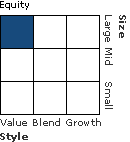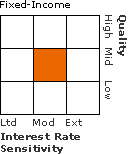|
| Release date as of 2025-09-30. Data on page is subject to change. |
|
|
Overall Morningstar
Rating™
|
| What is this?
|
|
 |
| As of 2025-09-30 |
|
Out of 224
Tactical Allocation Funds
|
|
|
|
Morningstar®
Style Box™
|
| What is this?
|
|
 |
|
| As of 2025-06-30 |
|
 |
|
| As of 2025-06-30 |
|
|
| Total Fund Assets ($ Mil) |
| 201.14 |
|
|
|
| Investment Objective & Strategy |
|
| The investment seeks maximum real return, consistent with preservation of real capital and prudent investment management.
|
|
| The Portfolio is a "fund of funds," which is a term used to describe mutual funds that pursue their investment objective by investing in other funds. It invests under normal circumstances substantially all of its assets in the least expensive class of shares of any actively managed or smart beta funds (including mutual funds or exchange-traded funds) of PIMCO Funds, PIMCO ETF Trust or PIMCO Equity Series, each an affiliated open-end investment company, except other funds of funds and Underlying PIMCO Funds. The fund is non-diversified. |
|
|
| Morningstar Category: Tactical Allocation |
|
| Tactical Allocation portfolios seek to provide capital appreciation and income by actively shifting allocations across investments. These portfolios have material shifts across equity regions, and bond sectors on a frequent basis. To qualify for the tactical allocation category, the fund must have minimum exposures of 10% in bonds and 20% in equity. Next, the fund must historically demonstrate material shifts in sector or regional allocations either through a gradual shift over three years or through a series of material shifts on a quarterly basis. Within a three-year period, typically the average quarterly changes between equity regions and bond sectors exceeds 15% or the difference between the maximum and minimum exposure to a single equity region or bond sector exceeds 50%.
|
|
|
| Non-Diversified Funds: Funds that invest more of their assets in a single issuer involve additional risks, including share price fluctuations, because of the increased concentration of investments. |
| Fund of Funds: An investment option with mutual funds in its portfolio may be subject to the expenses of those mutual funds in addition to those of the investment option itself. |
|
|
|
% of Net Assets |
|
| U.S. Stocks |
5.7 |
|
| Non-U.S. Stocks |
5.9 |
|
| Bonds |
92.8 |
|
| Cash |
-28.9 |
|
| Other |
24.5 |
|
|
| Total |
100.0 |
|
|
|
|
|
Data through
2025-06-30 |
|
|
|
|
| Morningstar Equity Sectors |
|
|
|
|
| Morningstar Fixed-Income Sectors |
|
| % Fund |
 |
Government |
39.02 |
 |
Corporate |
11.85 |
 |
Securitized |
10.92 |
 |
Municipal |
0.04 |
 |
Cash & Equivalents |
23.40 |
 |
Derivative |
14.77 |
|
|
|
% Bonds |
| AAA |
0.02 |
| AA |
56.52 |
| A |
32.18 |
| BBB |
6.76 |
| BB |
4.52 |
| B |
0.00 |
| Below B |
0.00 |
| Not Rated |
0.00 |
|
|
|
|
|
| Total Number of Stock Holdings |
0 |
| Total Number of Bond Holdings |
3 |
| % of Net Assets in Top 10 Holdings |
78.21 |
|
|
| Turnover % |
(as of 2024-12-31) |
45.00 |
| 30 Day SEC Yield % |
5.37 |
|
|
Sector |
Country |
Maturity Date |
Market Value ($000) |
% of Net Assets |
|
| Pimco Fds |
--- |
USA |
2027-10-01 |
38,399 |
19.42 |
| Pimco All Asset: Multi-Real Fund |
--- |
USA |
2036-01-01 |
30,891 |
15.62 |
| PIMCO Low Duration Instl |
--- |
USA |
2028-02-01 |
21,536 |
10.89 |
| PIMCO Total Return Instl |
--- |
USA |
2035-01-01 |
15,053 |
7.61 |
| PIMCO Emerging Mkts Lcl Ccy and Bd Instl |
--- |
USA |
2033-12-01 |
12,255 |
6.20 |
 |
| PIMCO Em Mkts Ccy and S/T Invsmt Instl |
--- |
USA |
2026-11-01 |
8,760 |
4.43 |
| PIMCO TRENDS Managed Futures Strat Instl |
--- |
USA |
2031-09-01 |
7,557 |
3.82 |
| PIMCO RAE Emerging Markets Instl |
--- |
USA |
2037-11-01 |
6,880 |
3.48 |
| PIMCO International Bond (USD-Hdg) Instl |
--- |
USA |
2034-09-01 |
6,703 |
3.39 |
| PIMCO High Yield Instl |
--- |
USA |
2030-04-01 |
6,628 |
3.35 |
 |
|
 |
|
|
|
|
|
| Short Sale, Credit and Counterparty, Prepayment (Call), Currency, Emerging Markets, Foreign Securities, Loss of Money, Not FDIC Insured, Municipal Project-Specific, Nondiversification, Quantitative Investing, Value Investing, Index Correlation/Tracking Error, Issuer, Interest Rate, Market/Market Volatility, Commodity, Convertible Securities, Distressed Investments, Equity Securities, ETF, Futures, High-Yield Securities, Mortgage-Backed and Asset-Backed Securities, Municipal Obligations, Leases, and AMT-Subject Bonds, Restricted/Illiquid Securities, Underlying Fund/Fund of Funds, U.S. Federal Tax Treatment, Derivatives, Leverage, Sovereign Debt, China Region, Management, Structured Products, Small Cap, Real Estate/REIT Sector, Market Trading |
|
| Show Risk Definitions |
|
|
| Inception Date: 2004-04-30 |
|
| Robert D. Arnott (2003-04-30) |
|
| Mr. Arnott is the founder and chairman of Research Affiliates, a subadvisor to PIMCO. In 2002, he established Research Affiliates as a research-intensive asset management firm that focuses on innovative asset allocation and alternative indexation products. He previously served as chairman of First Quadrant, as president of TSA Capital Management (now part of Analytic Investors), and as vice president at The Boston Company. He also was global equity strategist at Salomon Brothers. He has published more than 100 articles in journals. |
|
| James Masturzo (2023-07-31) |
|
|
|
| Pacific Investment Management Company, LLC |
|
|
|
|
|
|
|
|

© Copyright 2025 Morningstar, Inc. All rights reserved. Morningstar, the Morningstar logo, Morningstar.com, Morningstar Tools are either trademark or service marks of Morningstar, Inc. The information contained herein: (1) is proprietary to Morningstar and/or its content providers; (2) may not be copied or distributed; and (3) is not warranted to be accurate, complete or timely. Neither Morningstar nor its content providers are responsible for any damages or any losses arising from any use of information. Past performance is no guarantee of future performance. |
|
Past performance is no guarantee of future results.
Returns will vary and shares may be worth more or less than their original cost when sold.
|
|









